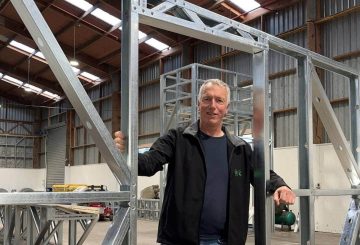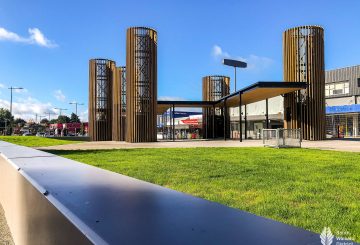타우포 소개
타우포는 뉴질랜드 북섬 중심부에 위치하고 있으며, 타우포의 심장부에는 뉴질랜드 내륙 바다인 반짝이는 타우포 호수가 있습니다.호수 주변을 여행하면서 상상할 수 있는 모든 풍경을 찾을 수 있습니다.눈 덮인 겨울 스키장과 고산 사막.새 노래와 함께 살아 있는 고대 숲.송어가 가득한 강과 천둥이 울리는 후카 폭포.활력을 되찾아주는 온천이 있는 지열 계곡의 김이 나는.통가리로 국립공원의 굉장하고 다른 세상의 풍경에 우뚝 솟은 세 개의 화산.
전설에 따르면, 나토로이랑기가 호수의 창조를 책임지고 있다고 합니다.추종자를 정착 할 수있는 적절한 장소를 찾고있는 동안, 그는 타우하라 산 정상으로 올라갔습니다. 그 앞에 큰 먼지 그릇을 깔았습니다.
이 불모의 지역에서 성장을 촉진하고자 하는 Ngatoroirangi는 산 중턱에서 토타라 나무를 뿌리 내리고 먼지 그릇에 던졌습니다.서풍으로 인해 그의 흔적을 놓치게되고 나무가 거꾸로 떨어졌습니다.지구를 관통하고 담수가 솟아 타우포 모아나 (Taupo의 바다) 를 형성했습니다.이 나무는 화레와카 포인트 (Wharrewaka Point) 에서 약 70m 떨어진 물 아래에서 여전히 볼 수 있다고 알려져 있습니다.
새로 만든 호수 기슭에서 추수 감사절을 보낸 후, 그는 망토에서 물가를 뽑아 물에 던져서 호수의 토착 물고기가 되었습니다.이 중 하나가 장어로 바뀌었지만 짧은 거리를 뒤틀린 후에는 죽었습니다.오늘날까지 호수에는 아직 뱀장어는 없습니다.
이 지역의 원래 거주자 (탕가타 훼누아) 는 오늘 이곳에 남아 있는 마오리 부족이었습니다: 누가티 투와레토아.부족은 아라와 이주 카누의 항해자인 나토로이랑기 (Ngatoroirangi) 에서 하강을 주장합니다.아라와 카누가 서기 약 750년에 아오테아로아/뉴질랜드에 상륙한 후, 나가토로이랑기와 같은 카누의 친척인 티아 (Tia) 는 중앙 고원 지역을 탐험하는 첫 번째로 경쟁했습니다.
티아 (Tia) 의 사건은 호수의 동쪽에 도착했다고 말했다. 그는 호우 망토 (타우포) 와 비슷한 절벽 형성을 지적했다.그런 다음 제단을 세우고 티아의 위대한 망토라고 타우포-누이아 티아 (Taupo-nui-a-tia) 라고 주장했다.이것은 결국 타우포로 축약되었습니다.
그러나 Ngatoroirangi는 황혼에 같은 동부 해안선에 도착하여 그곳에 캠프를 세웁니다.그의 후손들은 타우포라는 이름이 타우 (정착하거나 쉬기 위해) 와 po (밤) 에서 왔다고 주장합니다.Ngatoroirangi는 제단을 세우고 티아 (Tia) 보다 나이가 많다고 주장했으며 주변 땅의 소유권에 대해 그에게 도전했습니다.티아 (Tia) 는 결국 그에게 인정하고 서쪽으로 티티라우펜가 산 기슭의 한 지역으로 옮겨갔습니다.
1980년대에는 마이네 베이의 10미터 높이의 마오리 암각이 그의 후손들에 의해 조각되었는데, 나토로이랑기 (Ngatoroirangi) 는 몽상 있는 마오리 항해자이자 부족의 지도자로 여겨졌다.


















































